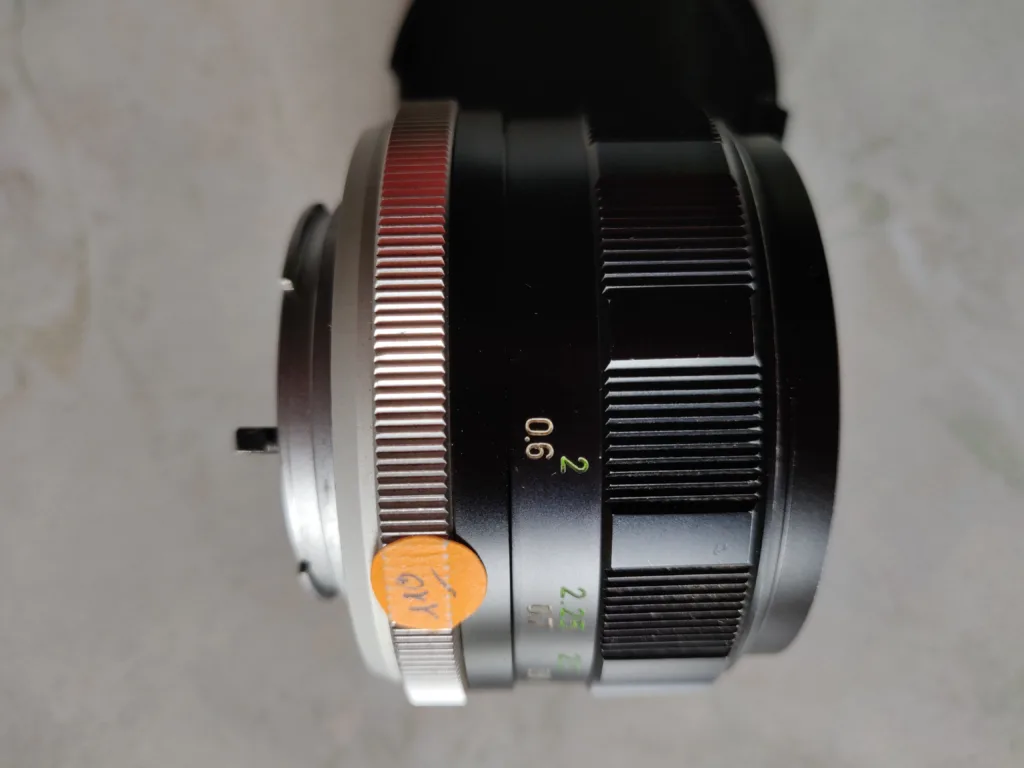Radioactive vintage lenses refer to camera lenses that were produced during the mid-20th century. Primarily from the 1940s to the 1970s, which contained radioactive materials as part of their optical glass elements. These lenses were often used in various cameras produced by different manufacturers.
Discussing this topic that has piqued my curiosity, why is one of the lenses I use, the MINOLTA 58mm F1.4, referred to as a “radioactive” lens, meaning it contains optics with radioactive elements.
I’m honestly not sure if this lens contains radioactive elements. The sources I researched online are conflicting and not very precise. The only certain fact is that MINOLTA has certainly used thorium-treated glass for the production of its photographic lenses. So I cannot rule out that this lens also has radioactive elements.
Personally, I’ve no particular reservations or fears in using this lens. Nor do I believe that it can be in any way dangerous. The use for a few hours during a day of photography is truly limited. For storage at home, I have chosen a neoprene pouch closed with a fabric drawstring. Additionally, the lens is somehow sealed by the included front and rear caps.
So, this post is born with the intention of clarifying the subject and providing some better information. For those who would like to delve further, there are plenty of authoritative sources that go into very detailed explanations, which I have intentionally omitted here for the sake of brevity.
Nevertheless, the topic is intriguing on one hand and interesting on the other. It deserves further exploration, and to the best of my abilities, I have tried to research and read up on it.

Here are some key points to consider regarding radioactive vintage lenses:
- Thorium Oxide Glass. Many of these vintage lenses contained glass elements doped with thorium oxide (often referred to as “thoriated glass”). Thorium oxide was added to improve the refractive properties of the glass, making it particularly useful for lens elements. The radioactive properties of thorium oxides made the lenses easily detectable with Geiger counters.
- Radioactive Emissions. Thorium-232, the radioactive isotope in thorium oxide, emits low-level alpha particles. While alpha radiation is generally not harmful outside the body. It can be hazardous if the radioactive material is inhaled, ingested. Or the lens is used very close to the eyes for an extended period. The risk of exposure to radiation from these lenses is typically minimal, but precautions should be taken.
- Yellowing of Glass. Over time, lenses containing thorium oxide glass can develop a yellow or yellow-brown tint due to radiation-induced coloration. This yellowing can affect the optical quality of the lens and may require corrective measures. Such as lens de-yellowing or digital post-processing.
- Safe Handling. It’s important to handle radioactive vintage lenses with care. Avoid opening or dismantling them, as this can release radioactive particles. It’s advisable to store these lenses in a well-ventilated area. Not using them close to the eyes for an extended period. A good practice to wash hands after handling such lenses.
- Alternatives. Many modern camera lenses no longer use radioactive glass elements, as there are safer and more advanced optical materials available. If you are concerned about the radioactivity of a vintage lens. You can consider having it tested or replaced with a non-radioactive alternative.
- Collector’s Items. Some photographers and collectors seek out radioactive vintage lenses for their historical and aesthetic value. Lenses can offer unique optical characteristics, such as a distinctive “glow” or rendering. Which can be desirable for certain photographic styles.

